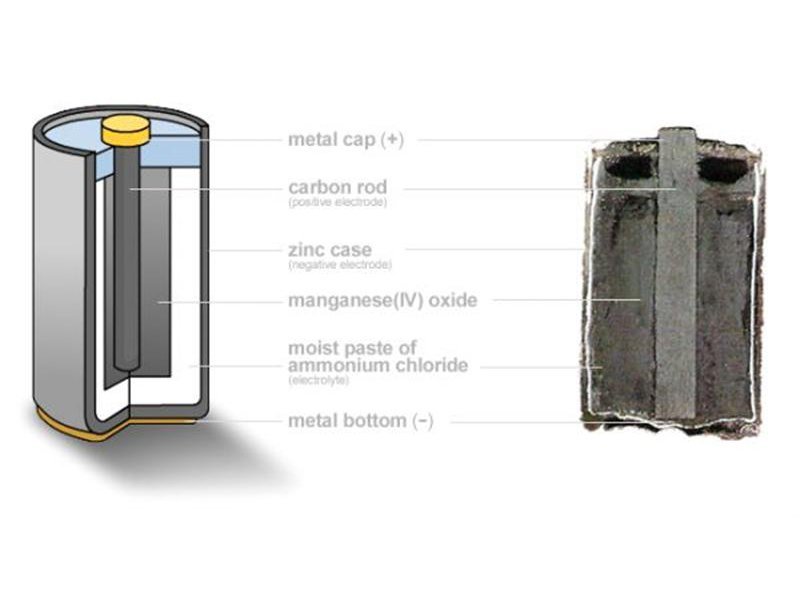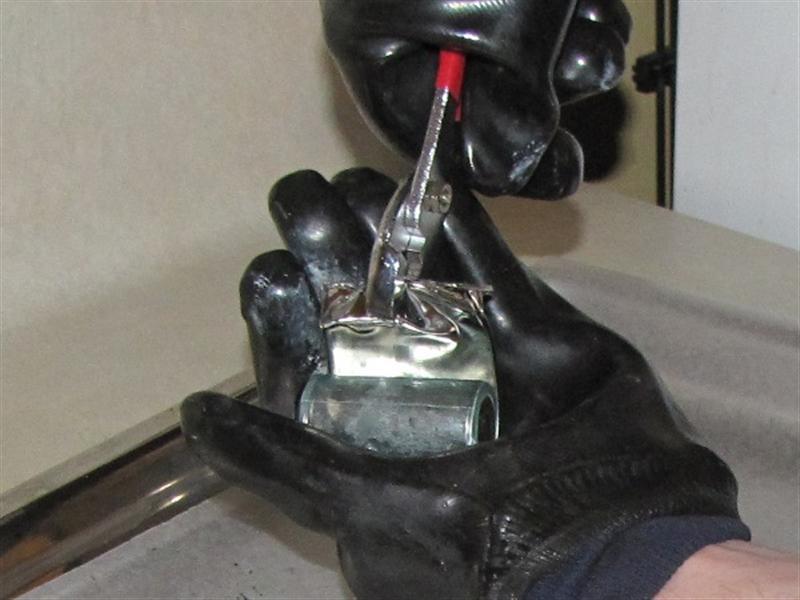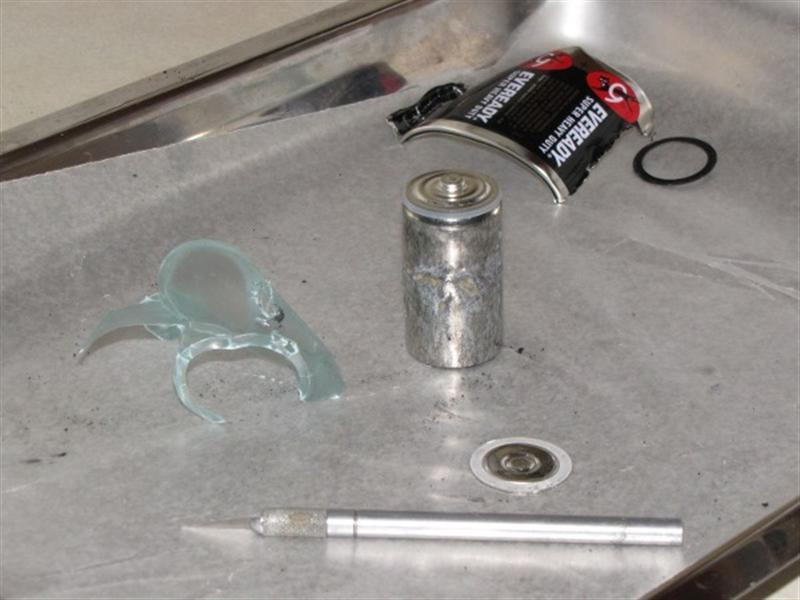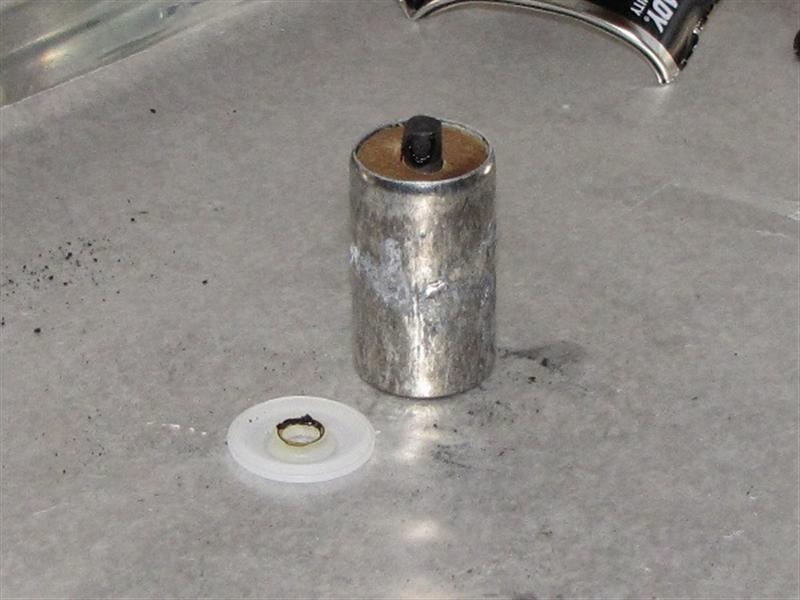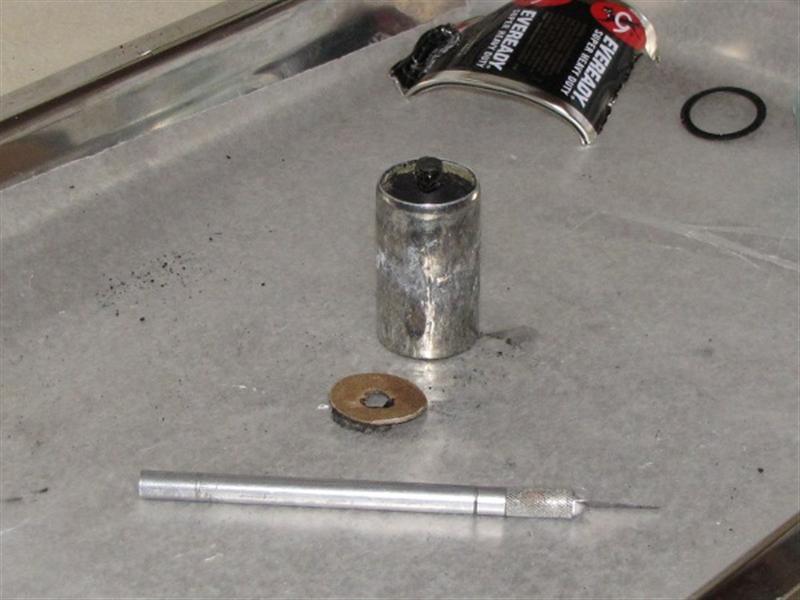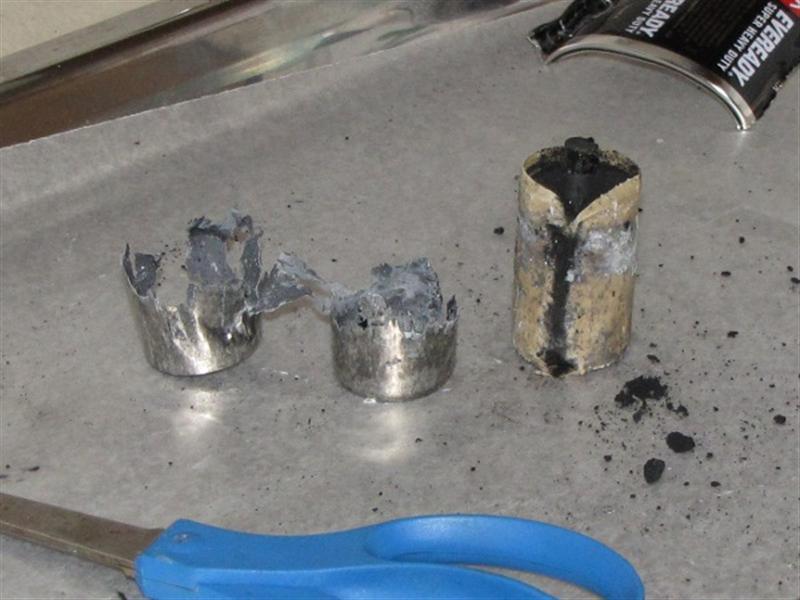This tutorial shows how to take apart a spent zinc-carbon dry cell of the common household type. Besides making for an interesting object lesson in electrochemistry, taking apart a spent D-cell, for instance, allows you to salvage many materials which can be of use to amateur chemists–materials which would otherwise probably end up in a landfill. Separated from their reactive components, the leftover parts of the battery can be safely added to most municipal recycling streams.
A zinc carbon cell (Wikipedia) contains manganese dioxide, which, among other things, is useful as a catalyst in the production of oxygen gas from hydrogen peroxide. It also contains metallic zinc, which can be used, for instance, as a reagent in the production of hydrogen gas from strong acid. Finally, it contains a carbon or graphite rod which can be used as an electrode in any of a number of electrochemical experiments, such as the electrolysis of water and the construction of an arc light or arc furnace.
Note that the battery in this tutorial is a zinc-carbon dry cell. This tutorial does not cover the dismantling of an alkaline-type cell. Alkaline cells are of slightly different internal construction and contain the strong base potassium hydroxide as an electrolyte, which is rather more dangerous to handle than the ammonium chloride/zinc chloride mixture used in zinc carbon cells. Zinc-carbon cells are commonly labelled “general purpose” or “heavy duty,” and will not have the word “alkaline” on the case.
Project Steps
Set up work area

Set up a tray with a layer of wax paper in the bottom.
The tray will catch any stray manganese dioxide powder that gets loose during disassembly, and the wax paper will allow easy collection of the powder and its transfer to the mortar in step 8.
Remove outer case
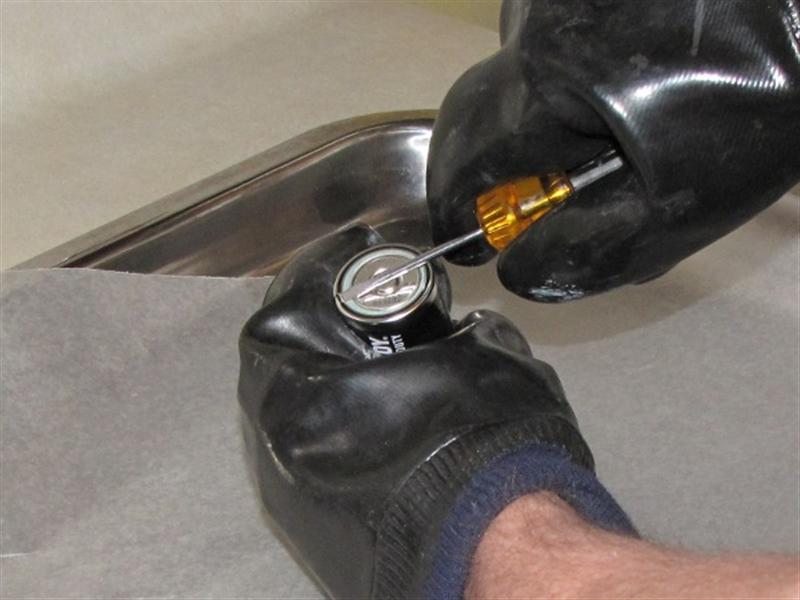
Gloves are important during this step, both for protection against chemical exposure and for protection from the sharp exposed edge of the sheet metal casing.
Start at the bottom (negative) terminal of the cell. Insert a small flat-bladed screwdriver under the rim of the casing where it’s crimped against the bottom gasket, right next to the seam that runs up the side of the cell, and pry up a small section of the rim.
Work the screwdriver down around the side of the cell, prying the casing open at the seam.
Once you’ve opened the seam, grab the exposed flap of metal with a pair of pliers and unwrap it from around the cell. Doing so will expose the zinc anode “can” beneath a plastic liner. It will also probably release the top gasket which insulates the case from the top terminal.
Remove plastic liner
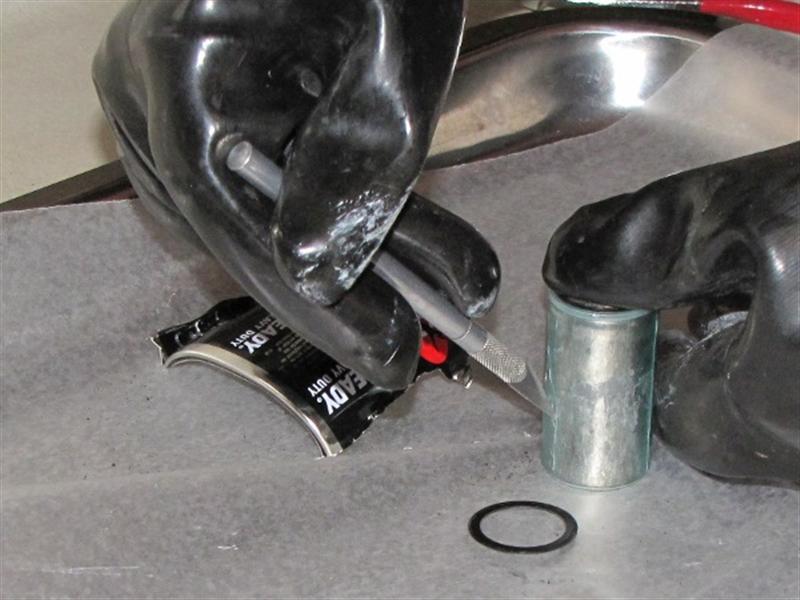
With a sharp knife, cut the plastic liner up the side of the cell as shown.
Peel the plastic liner off from around the cell. This will probably release the steel bottom terminal and the bottom gasket.
Expose manganese dioxide powder

The top metal terminal may lift right off, or it may require a bit of prying with a small flat-blade screwdriver.
Beneath the top steel terminal, there is a plastic shield with a carbon rod protruding. The carbon rod is sealed in place with a bit of asphalt. The plastic shield can be removed easily by prying with a flat-bladed screwdriver.
Underneath the plastic shield is a paper washer. Use the blade of a hobby knife to spear it and lift it up and out of the cell, exposing the damp black powder of the manganese dioxide mixture inside.
Cut off zinc can

In a spent cell, the zinc can will be thin and badly corroded, especially around the middle of the cell.
Using a sharp pair of scissors, cut through the zinc can starting at the exposed rim and working down the side of the cell.
I got all the way down one side before the top and bottom halves of the can just popped off. line.
Remove paper liner

Beneath the zinc anode is a paper wrapper around the black cathode powder. Use a hobby knife to peel off as much of it as you can.
Remaining bits will be removed later, after the manganese dioxide is ground.
All that should remain at this point is a carbon rod sticking out of a lump of manganese dioxide, probably with some bits of paper wrapper still stuck to its surface.
Extract inanimate carbon rod

Tap the lump gently with a hammer to break it up, and extract the carbon rod.
Use the hobby knife blade to scrape off any manganese dioxide that remains on the carbon rod, and set the rod aside.
Grind manganese dioxide

The manganese dioxide should be damp when it comes out of the battery, but if it is not, moisten it with a bit of water. Do not grind dry manganese dioxide, as its airborne dust is hazardous.
Transfer the chunks of damp manganese dioxide powder, and any remaining paper, into a mortar by lifting up, folding, and pouring from the wax paper work surface.
Grind the chunks of damp manganese dioxide, in the mortar, with the pestle, using small, strong, circular motions.
When powder is about the consistency of coarse-ground coffee, transfer it from the mortar into a coffee filter. Using tweezers, pick out any remaining bits of the paper wrapper and add them to your paper recycling stream.
Clean extracts

The manganese dioxide powder in this condition is ready to use in most amateur applications, including generation of oxygen gas from hydrogen peroxide. It is not pure, having residual carbon and electrolyte salt (ammonium chloride and/or zinc chloride) mixed in. The carbon is difficult to remove, but it is also, fortunately, largely inert. Residual salts can be removed by washing with hot water, as shown above, using a strainer. These salts can be safely disposed of down the sink, as can small amounts of manganese dioxide. line
The zinc can is also, probably, not completely pure zinc metal, but for most amateur applications (including the generation of hydrogen gas by reaction with acid) can be used as such. It also may have residual salt on the inside surface, and this can be removed, again, by washing the pieces under hot water in a strainer.
The carbon rod will have residual manganese dioxide and possibly residual asphalt on its surface. To remove these, wet sand the rod lightly using medium-grit wet-or-dry sandpaper. This will also “activate” the surface of the rod, increasing its surface area and its utility as an electrode.
Conclusion
Save the manganese dioxide powder, the zinc pieces, and the carbon rod for use in other experiments. The steel casing and top and bottom terminals can be recycled with steel soup cans and other ferrous metal waste. The plastic liner, top gasket, and shield can be recycled with other common household plastics. The paper gasket, washer, and wrapper can likewise be added to normal paper recycling streams.


